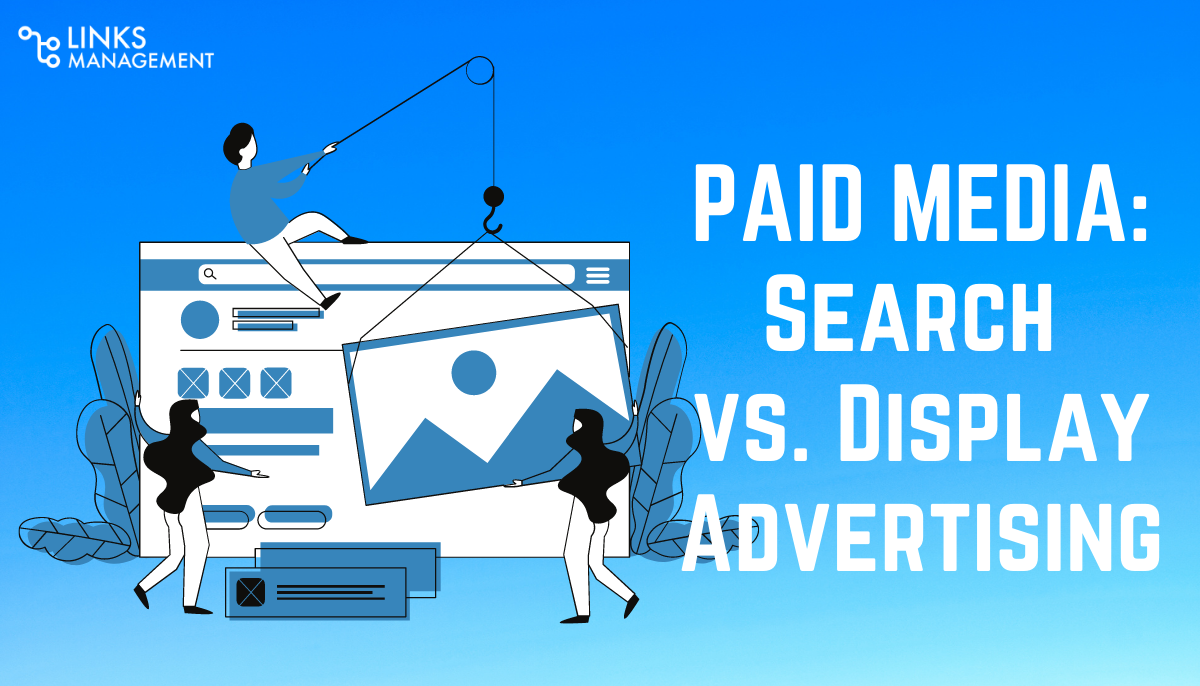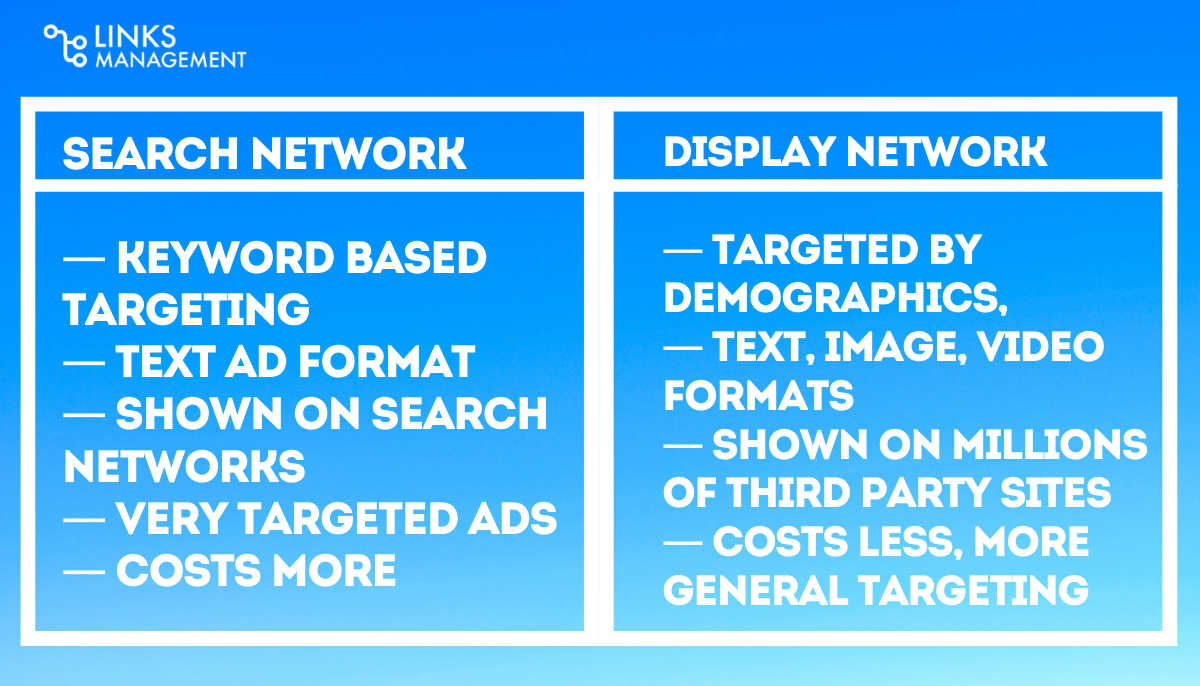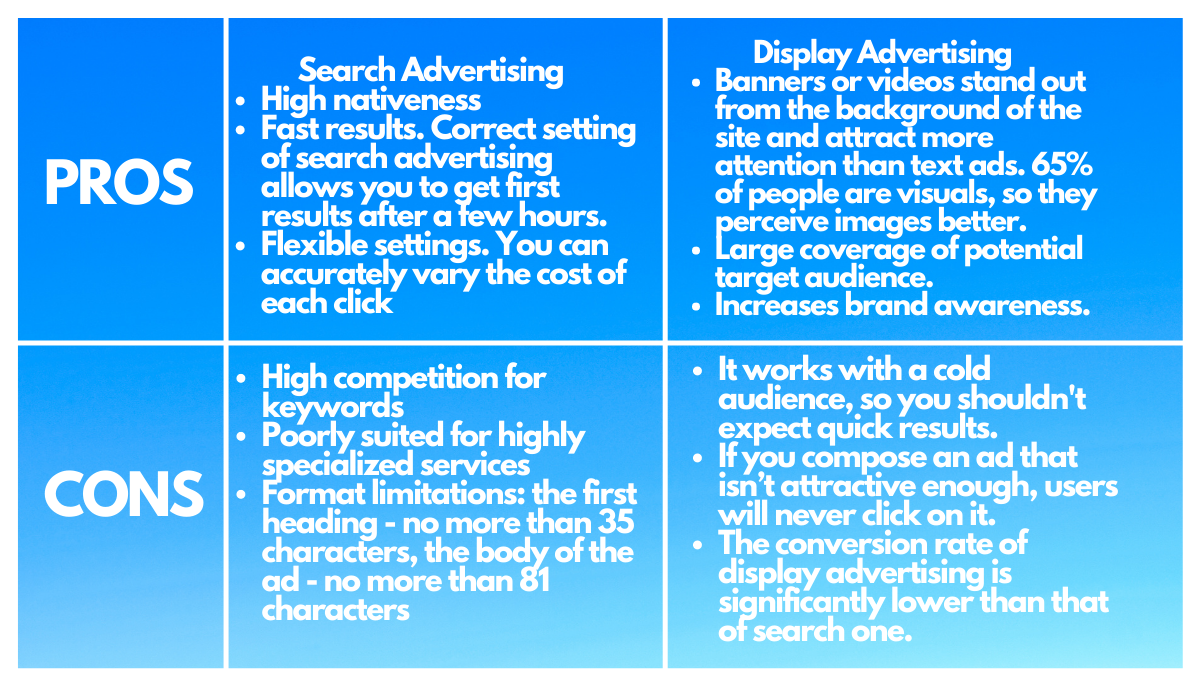PAID MEDIA: Search vs. Display Advertising
Have you been online today? Unless you live in the confines of a case still not serviced by cellular or satellite, the answer is very likely “Yes, I have.” If you weren’t checking your email, then, you were searching for something. And to an advertiser, that means you were exposing your intent.

You were telling the marketers, in your own words, exactly what you wanted at that very moment. If only we as advertisers could get our hands on your right when you did that search….
… and that is exactly what Google AdWords has enabled us to do. You no longer need to waste advertising dollars on prospects that have no interest in your products or services. And it gets better than that. Not only can you go after potential customers by the words they type, but also AdWords allow you to further refine targeting by things like geography, device, day of the week, networks, websites, demographics, etc.
So, are you ready to delve into the two most popular ways to advertise online? These are Search and Display Advertising. And while both can really help your business, they are also pretty different. Let’s look at how both kinds of ads work, where they show up, and what they look like, so you can know how to use them best.
Introduction to Google AdWords: Display ads vs Search ads
Through Google PPC AdWords, you can reach more than 80% of the entire Internet-using world, showing your ads across the Google properties that have become a staple of our everyday lives, as well as more than a million other websites. And all of this is available in an advertising medium that is remarkably accountable. Through flexible bidding options and tracking mechanisms, you will be able to control your costs, measure impact, and calculate the return on your advertising investment within a matter of hours.
But before we dive into that, let’s get an answers to the main questions: “What are display ads?” “What is paid search advertising?” “What is more efficient?’
So, what is display advertising? Display advertising can be described with the phrase “people surf the Internet and see your ad”, while search advertising is “people search and find your ad.” Using the last tool of advertising, your ad will be shown to the user at a time when he or she is interested in goods or services. This way, if you set up an ad properly, you’ll be able to show your ad to people who are already interested in buying your product.
Display advertising works differently. It “introduces” your product or service before a potential customer starts looking for it. This kind of ad allows you to show your banners to potential customers at the right time and place. For example, when one views sites or videos on Youtube, uses Gmail or mobile applications.
When it comes to comparing these types of advertising, we should start with an understanding of the tasks they perform. Display advertising works with the perception of the audience: it draws attention to a product, company, brand, forms an opinion, binds emotions to the brand. Search advertising “communicates” with users who already have an idea of the product or service they are looking for, the main purpose of this type of ad is direct sales.
Google Search Network vs Display Network: What to Choose?
First of all, just look at this table:

So, the audience coverage & targeting methods are the things that distinguish these two types of ads. The search one is tuned by keywords and by the content of the pages of the sites, while display advertising pays attention to socio-demographic characteristics, income, interests, and behavioral targeting. The search ads follow the path of narrowing targeting in order to solve its main task, filtering out “unnecessary” audiences. Display advertising works for increasing information and awareness of a product or brand, and therefore to a wider audience.
So, who wins in the battle “display ads vs search ads”? Which method to choose?
In fact, it’s pretty easy. Aim for display advertising if you want to:
- tell about a new product;
- generate demand for a product or service;
- increase brand awareness.
Display ads are primarily suitable for new products that users don’t know about. The task is to tell as many people as possible about it, which in turn stimulates the demand for a product in search. In addition, display advertising is suitable for those customers who want to increase brand awareness, or, in other words, create the same demand but in relation to their brand.
And, accordingly, choose search ads if
- the demand for a product or service has already been formed;
- now, your main task is to sell.
Search advertising solves the problems of advertisers who work with a product for which there is already a generated demand. They can also use display ads to increase reach, but it’s still not a performance tool. And vice versa, if no one is looking for your product yet, it is worth highlighting clear segments of the target audience and launching a media.
Pros & Cons of Search and Display Advertising

Integrate Search and Display Advertising for Maximum Synergy
The combination of display ads with search creates a powerful, one-two punch for marketers. Recent studies found that online display advertising is effective at producing lifts in brand metrics, but it makes its strongest contribution when used in conjunction with search engine results (including paid and organic).
Combining these two types of ads can also boost online purchasing behavior. Search, given its obvious indication of purchase intent, has a stronger influence on customer buying behavior than display ads alone. But when search and display ads are combined, the overall impact is significantly greater than that of either search or display ads individually.
For example, whereas display ads alone provided a 42% lift on the percentage of consumers making a retail purchase online, and search generated a 121% lift, the combination of search and display ads together produced a 173% lift. Furthermore, the one-two punch of search and display resulted in significantly higher dollar spending per thousand consumers exposed.
So, actually, search and display advertising differ in their tasks and perfectly complement each other, working in tandem, where display advertising creates demand, and search ad creates an offer.
Enter URL & See What We Can Do Submit the form to get a detailed report, based on the comprehensive seo analysis.